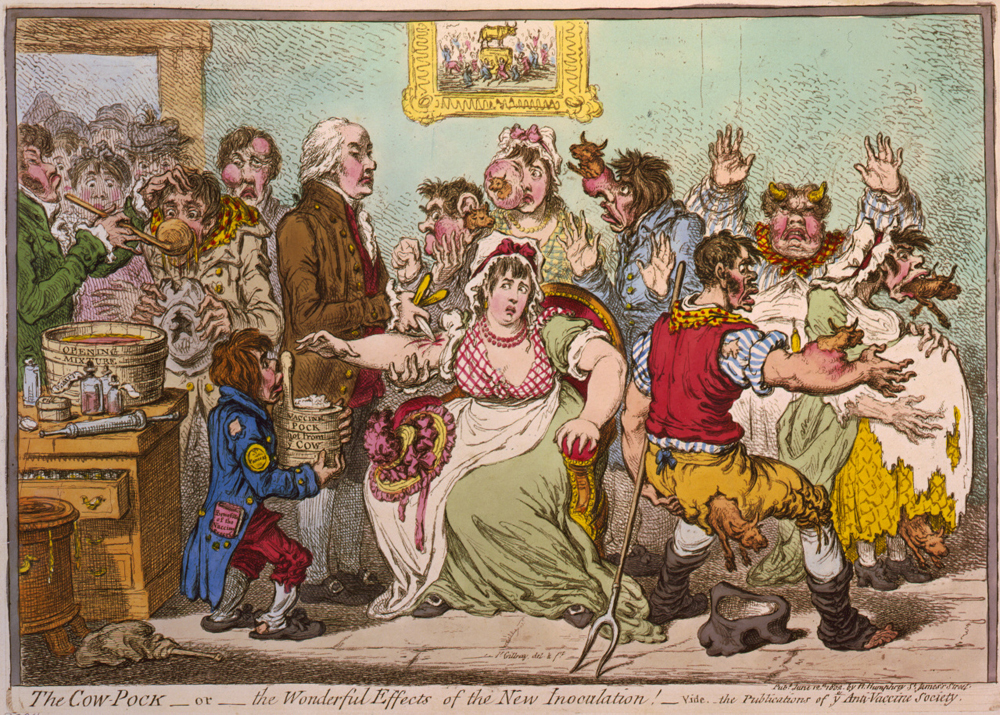 Menu
Menu
 Menu
Menu
The law is often used to promote public health. As society has advanced, so too have our laws.
In the mid to late 1800s, vaccinations were often mandatory. England, Ontario, and many American cities and states had such laws in place. The application of these laws was often shameful, and minority communities usually received the worst treatment.
For example, a smallpox vaccination raid in New York City’s Little Italy neighbourhood saw the police hold men down and vaccinate them against their will, while babies were torn from their mothers’ arms and sent to quarantine hospitals. Worse yet, in one of Middlesboro Kentucky’s Black neighbourhoods, people were vaccinated at gunpoint.
To many, mandatory vaccinations were an overreach of state power, to say nothing of the uneven and cruel implementation. States, on the other hand, believed that they had a duty to keep society functioning and citizens free of contagious disease. Courts often sided with the state. For example, in Jacobson v. Massachusetts, the U.S. Supreme Court found that the health interests of the public as a whole—through compulsory smallpox vaccinations—outweighed the individual’s right to decline vaccines. Refusing a vaccine meant disease could spread, and individuals do not have an unfettered right to harm society.

Satirical 1802 cartoon by James Gillray, imagining cows emerging from people vaccinated for smallpox.
In 1898, England moved towards a different approach to vaccination. To appease people who objected to mandatory vaccination, England added a “conscience clause” to its vaccination laws. The clause was vague, allowing people to be exempt from a vaccine so long as they could convince a magistrate that they had good reason to do so. The law popularised the term conscientious objector and spawned a widespread debate on what it meant to be one.
The legacy of this change in English law—the desire to balance conscientious objection with the need to protect public health—can be seen in vaccination laws in Canada today.
Canada has no laws that force people to be vaccinated. However, some provinces may require children to have certain vaccines in order to attend public school. As well, some healthcare facilities may require workers to be vaccinated against particular diseases, if they will be performing particular duties. And some vaccines may also be mandatory to enter a foreign country.
Unvaccinated people may not enjoy the same freedoms as vaccinated people.
People generally may decline vaccinations for medical, religious or philosophical reasons. However, unvaccinated people may not enjoy the same freedoms as vaccinated people. For example, in the event of an outbreak of a particular disease, children who have not been immunised may be required to stay home from school. Similarly, healthcare workers who refuse a vaccine may face restricted duties in the event of an outbreak. These are the kinds of compromises that society has agreed upon, when there are no mandatory vaccination laws.
Today, our collective and our individual memories are free of first-hand accounts of many contagious diseases. This is why it is important to understand the history of disease and vaccines, in order to give context to the role vaccines have played in society. There have been a few hiccups in vaccination’s history, sometimes major. But vaccines have been a significant factor in freeing us from many fatal and disfiguring diseases.
As the Public Health Agency of Canada notes, vaccines have saved more lives in the past 50 years than any other health intervention. The overwhelming consensus of the medical community is that vaccines are safe and effective. Nonetheless, everyone with questions should discuss their medical procedures with their health care provider, to help understand risks and benefits of their health care.
COVID-19 has hit Indigenous peoples harder than the general population. Crowded housing conditions and poorer general health have played a role, which can be linked to racism, economic inequality, and inadequate access to healthcare.
To help counter COVID’s disproportionate impact on Indigenous communities, vaccines have been prioritised for First Nations. Yet, some people are hesitant. This hesitancy can be explained in part by rather shameful historical realities. As an APTN News report pointed out,
In the residential schools and sanatoriums eras, residents have shared stories of medical testing and experiments. Most recently, a class action lawsuit was launched after several Indigenous women say they were sterilized without their consent. And still to this day Indigenous people face systemic racism within the healthcare system resulting in substandard care or neglect.
Such dark experiences of neglect, abuse, and medical experimentation help explain why some Indigenous people are apprehensive about new COVID vaccines. Many culturally-relevant resources are now available to help Indigenous people make informed decisions about vaccination.